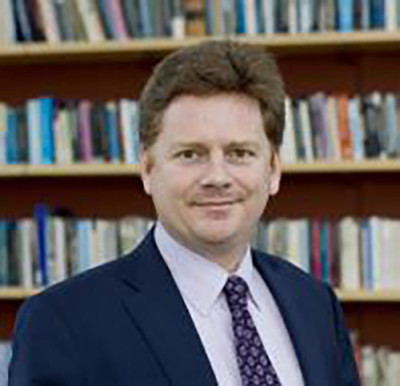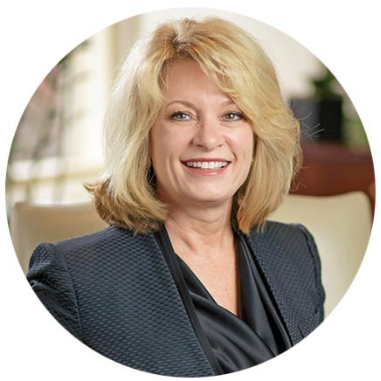Weiss: Experts Say Isolation and Loneliness Impacting More Older Americans
Monday, May 01, 2017
Sarah Hosseini, a blogger on Scary Mommy, a website bringing entertainment and information to millennial mothers, penned a touching story about Marleen Brooks, a California resident, who came home to find a heartbreaking hand-written note from Wanda, her 90-year-old neighbor, asking her to be friends.
Wanda wrote: “Would you consider to become my friend. I’m 90 years old – live alone. All my friends have passed away. I’m so lonesome and scared. Please I pray for someone.”
According to Hosseini’s blog posting, Brooks shared this note with KTVU News Anchor Frank Somerville, who posted it on his Facebook page. She responded to the posting by saying, “Came home to this note from a lady that lives down the street from me. Makes my heart sad, but on the bright side it looks like I will be getting a new friend.”
GET THE LATEST BREAKING NEWS HERE -- SIGN UP FOR GOLOCAL FREE DAILY EBLASTThat evening Brooks visited her new friend, bearing a gift of cupcakes. After the visit, she wrote to Somerville describing this initial visit (which was posted on his Facebook page), says Hosseini. In this update posting, Brooks observed, “She’s such as sweet lady! And she was over the moon when we came over.” Brooks reported what Wanda said during the impromptu get together: “I hope you didn’t think I was stupid for writing you, but I had to do something. Thank you so much for coming over. I’ve lived here for 50 years and don’t know any of my neighbors.”
Wanda shared with her new acquaintance that she is on oxygen has congestive heart failure, osteoporosis and other age-related ailments, and her two surviving sons do not live by her,” noted Hosseini’s blog posting.
Zeroing in on a Growing Societal Problem
Wanda’s isolation and loneliness is not a rare occurrence. It happens every day throughout the nation. The U.S. Senate Special Committee on Aging recently put a spotlight on the growing number of Americans who are socially isolated and lonely, like Wanda, and expert witnesses detailed the negative consequences of this tragic societal problem.
In Room 403 of the Dirksen Senate Office Building, U.S. Senators Susan Collins and Bob Casey, the Chairman and Ranking Member of the Senate Aging Committee, held a morning hearing on April 27, 2017, “Aging Without Community: The Consequences of Isolation and Loneliness.”
The Senate Aging panel hearing (lasting almost two hours), the first in a two-part series, took a close look at the mental and physical health effects of social isolation and loneliness. The next hearing will explore ways to reconnect older people to their communities.
“The consequences of isolation and loneliness are severe: negative health outcomes, higher health care costs, and even death. The root problem is one that we can solve by helping seniors keep connected with communities,” said Senator Collins in her opening statement. “Just as we did when we made a national commitment to cut smoking rates in this country, we should explore approaches to reducing isolation and loneliness. Each has a real impact on the health and well-being of our seniors,” noted the Maine Republican Senator.
Adds, Senator Casey, “Older Americans are vital to the prosperity and well-being of our nation.” The Democratic Senator said, “Our work on the Aging Committee to ensure that we all remain connected to community as we age is important to maintaining that vitality. It is for that reason that we, as a federal government, need to sustain and improve our investments in programs that help seniors stay connected -- from Meals on Wheels to rural broadband to transportation services.”
When approached for her thoughts about the Senate Aging panel, Nancy LeaMond, AARP Executive Vice President and Chief Advocacy & Engagement Officer said, “We know that social isolation and loneliness has severe negative effects on older Americans and we’re pleased the US Senate Committee on Aging held a hearing on this important issue. As they explore solutions for social isolation and loneliness amongst older Americans, AARP looks forward to working with them on these issues in 2017.”
Senator Sheldon Whitehouse says, “When seniors get involved, the community benefits from their valuable contributions. And the personal connections seniors make engaging in the community can help them stay healthy and productive.” Whitehouse, who sits on the Senate Aging panel, will work to protect funding for senior centers and programs that Rhode Island seniors rely on to stay connected, like Meals on Wheels and Senior Corps.”
Social Isolation is a “Silent Killer”
Speaking before the U.S. Senate Special Committee on Aging today, social work professor Lenard W. Kaye, DSW, PhD, urged lawmakers to support programs that help older adults stay connected to their communities.
Kaye serves as director of the University of Maine Center on Aging. Joining three other experts, he reported to the committee that social isolation is a “silent killer” — due to placing people at higher risk for a variety of poor health outcomes — and he warned that more Americans are living in isolation than ever before.
“The prevalence may be as high as 43 percent among community dwelling older adults,” Kaye said. “And the risk is high as well for caregivers of older adults given that caregiving can be a very isolating experience.”
Kaye’s testimony also highlighted the state of current research in solving the problem of social isolation among older adults.
“Due to the various life events that can trigger social isolation, from death of a significant other, to loss of transportation to health decline, effective interventions will need to be diverse and they will need to be tailored to the personal circumstances of the isolated individual,” he said.
Kaye added that there is still significant progress to be made in determining what works for helping to reduce social isolation. Lack of rigor in studies of interventions aimed at reducing loneliness can make it difficult to evaluate some of these strategies.
In Pima County, 46 percent of nearly 2,300 seniors surveyed in its 2016 community needs assessment cited social isolation as a significant concern of those living alone, said W. Mark Clark, president of the Pima Council on Aging.
In his testimony, Clark says, “Changes to mobility, cognitive ability or health status can cause an individual to hold back from previously enjoyed social activities. Older adults in rural areas who can no longer driver are at incredible risk of physical and social isolation unless transportation options are available."
“While aging at home is cited as a top priority by a majority of older people, and doing so has both emotional and economic benefits, aging in place at home can also lead to isolation,” said Clark, noting that connections to the community wane as one gets older due to less opportunities to build new social networks.
In her testimony, Julianne Holt-Lunstad, a psychology researcher at Brigham Young University, estimated that over 8 million seniors are affected by isolation and social disconnect is increasing.
Holt-Lunstad told the Senators that research shows that social isolation and loneliness is as dangerous as being obese, as risky as smoking up to 15 cigarettes per day. and associated with higher rates of heart disease, a weakened immune system, anxiety, dementia, including Alzheimer’s disease and nursing facility admissions.
Finally, Witness Rick Creech, who was born with cerebral palsy, shared to the Senate Aging panel how disabilities can isolate a person. He described how an alternative communication (AAC) device, costing $10,000, a van concerted for a powered wheel chair passenger and smart home equipment to help him grow a “productive, independent adult.”
Meals on Wheels Program Vital Program for Isolated Seniors
It was clear to Senate Aging panel members and to expert witnesses that local Meals on Wheels programs can bring good nutrition and companionship to older American’s reducing social isolation and loneliness. Over two years ago, a Brown University study confirmed another benefit of visitors regularly knocking on the doors of seniors in need: a significant reduction in their feelings of loneliness.
“This continues to build the body of evidence that home-delivered meals provide more than nutrition and food security,” said study lead author Kali Thomas, assistant professor of health services, policy and practice in the Brown University School of Public Health and a researcher at the Providence Veterans Affairs Medical Center.
Thomas, a former Meal on Wheels volunteer said that the study is one of few to rigorously examine the long-presumed psychological benefits of home-delivered meal service. She believes it is the first randomized, controlled trial to assess the effect on loneliness, which has been linked by many studies to a greater risk for medical problems, health care utilization, and mortality.
“In a time when resources are being further constrained and demand is increasing, it is important that we have evidence that guides decision-making in terms of what services to provide and how best to provide them,” Thomas said.
Senator Susan Collins, chair of the U.S. Select Senate Committee on Aging, sees Meals on Wheels as policy strategy to address the growing number of isolated seniors and their loneliness. At the Senate Aging panel, Collins said, “For many, Meals on Wheels is not just about food – it’s about social sustenance, also. Seniors look forward to greeting the driver with a bit of conversation.” And the Republican Senator called for adequate funding to the nationwide Meals on Wheels network, comprising 5,000 local community-based programs. President Trump’s proposed cuts to Meals on Wheels were, “pennywise and pound foolish because in the end they’re going to cause more hospitalizations, more nursing home admissions, and poor health outcomes.”
Like Brooks, we should reach out to our older isolated neighbors in our community. A simple gesture like this can have a lasting, positive impact on both parties.
Herb Weiss, LRI’12 is a Pawtucket writer covering aging, health care and medical issues. To purchase Taking Charge: Collected Stories on Aging Boldly, a collection of 79 of his weekly commentaries, go to herbweiss.com.
Related Slideshow: The Power List - Health and Education, 2016
Related Articles
- Weiss: Regular Folks Give Sound Advice to Class of 2016 for Future Success
- Weiss: Rhode Island Lawmakers Can Say Never Again
- Herb Weiss: Revelations that Bring Together Heaven and Earth
- Herb Weiss: How the Presidential Election Impacts Social Security
- Weiss: This ‘Age Beat’ Writer to Publish Collected Stories on Myriad of Aging Issues
- Weiss: The Age of Disruption Tour’ Comes to Cranston
- Weiss: GAO Report Reveals Social Security Benefits Gap Between Rich, Poor
- Weiss: Social Security Gets Attention as Candidates Share Plans for Shoring Up System’s Solvency
- Weiss: Congressional Panel Looks Over Medicare
- Weiss: OAA Reauthorization Bill Goes to President Obama for Signing
- Weiss: Earth - The Gray(ing) Planet
- Weiss: The Political Legacy of James E. Doyle
- Weiss: Housing Report Supports Push to Approve Question 7
- Weiss: Trump Budget Proposal Makes Draconian Cuts to Aging Programs
- Weiss: House GOP Leadership Puts its Health Care Proposal on Fast-Track
- Weiss: GOP Health Care Proposal Pull at Last Moment
- Weiss: Carvelli - Making Lemonade Out of Life’s Lemons
- Herb Weiss: GOP Trial Balloon Called “Trojan Horse”
- Weiss: Overhauling Social Security & Medicare Gets ‘Thumbs Down’ in Recent Poll Findings
- Weiss: Search on for GOP Senators to Protect Medicare
- Fifth Time a Charm for Direct Care Worker Raises? MINDSETTER™ Weiss
- Weiss: Attack Stunned Area Vets - Pearl Harbor Survivors Recall Horror of Dec. 7, 1941
- Weiss: Can Our Nation Survive President-Elect Trump & the GOP’s Control of Capitol Hill?
- Weiss: Samaritans Celebrate Their 40th Birthday
- Weiss: Long-Time Fans Look Forward to RIMHOF Induction Ceremonies This Week



















